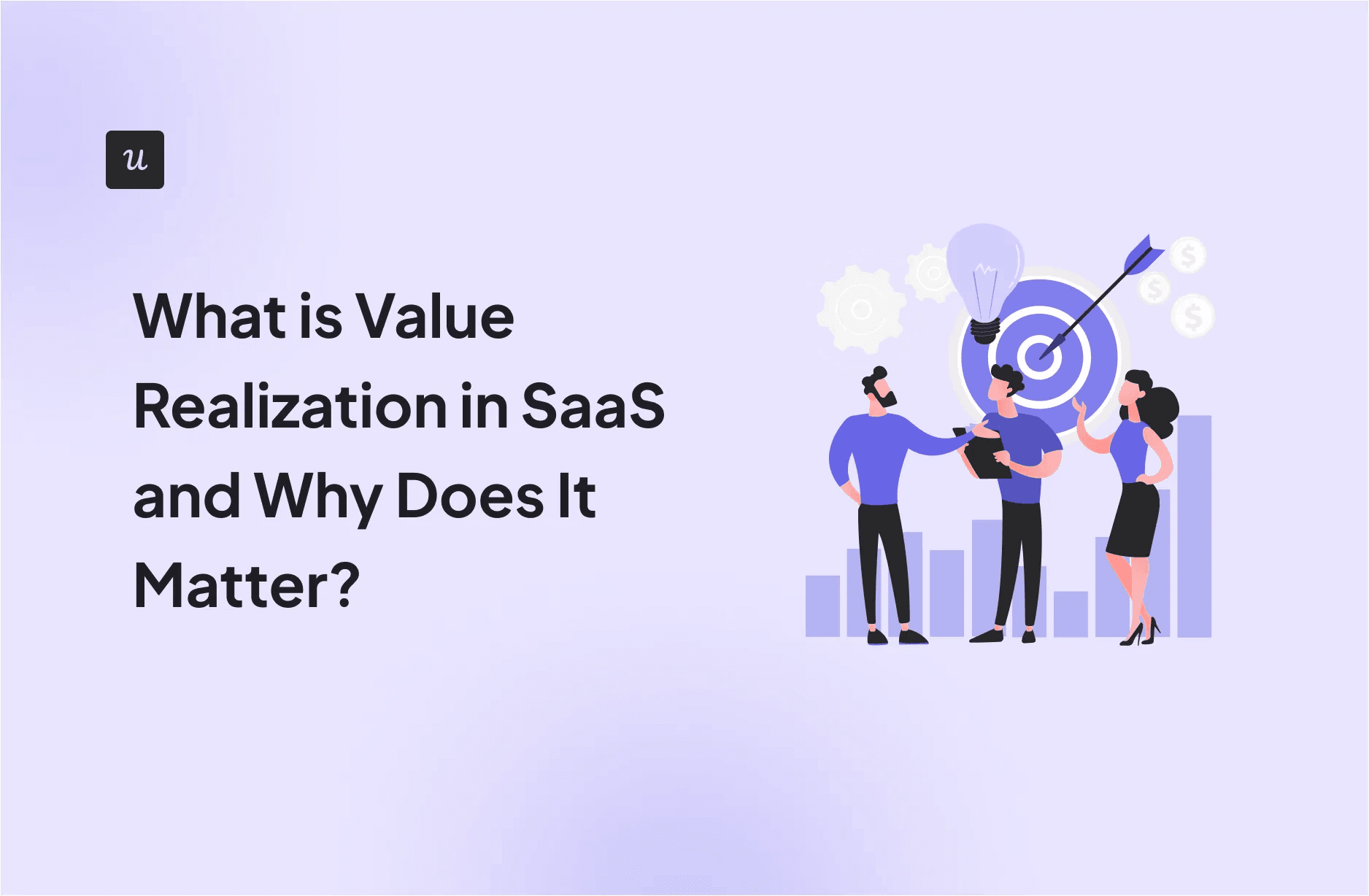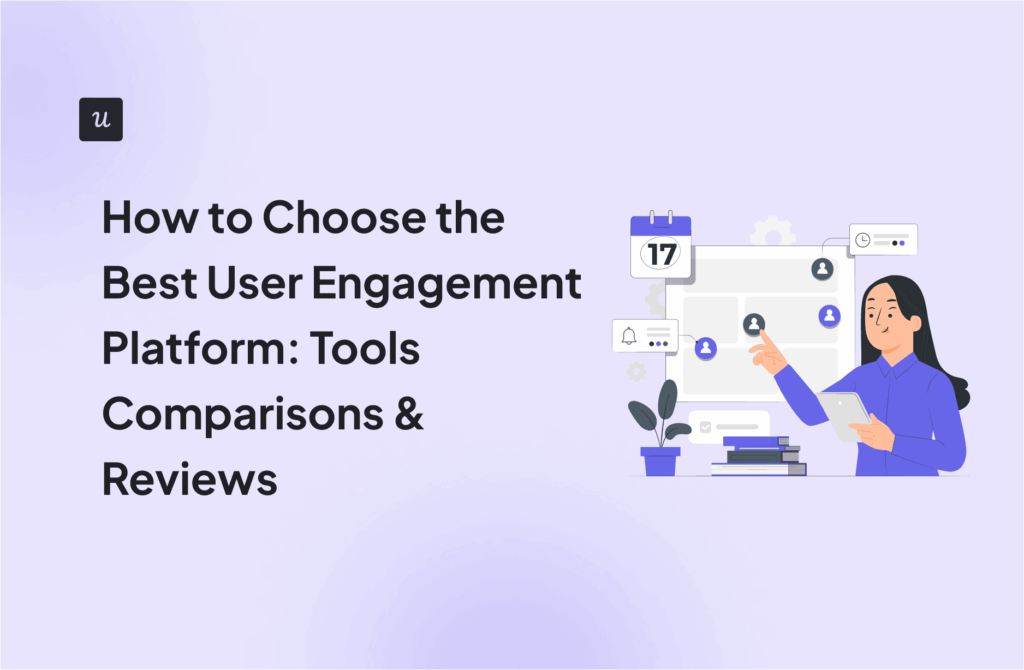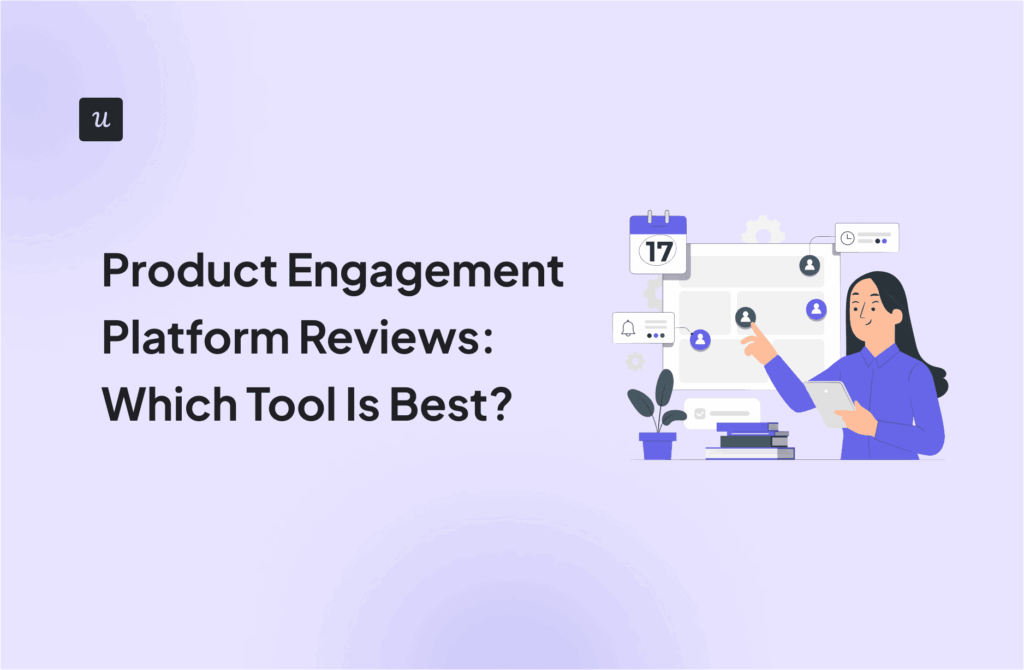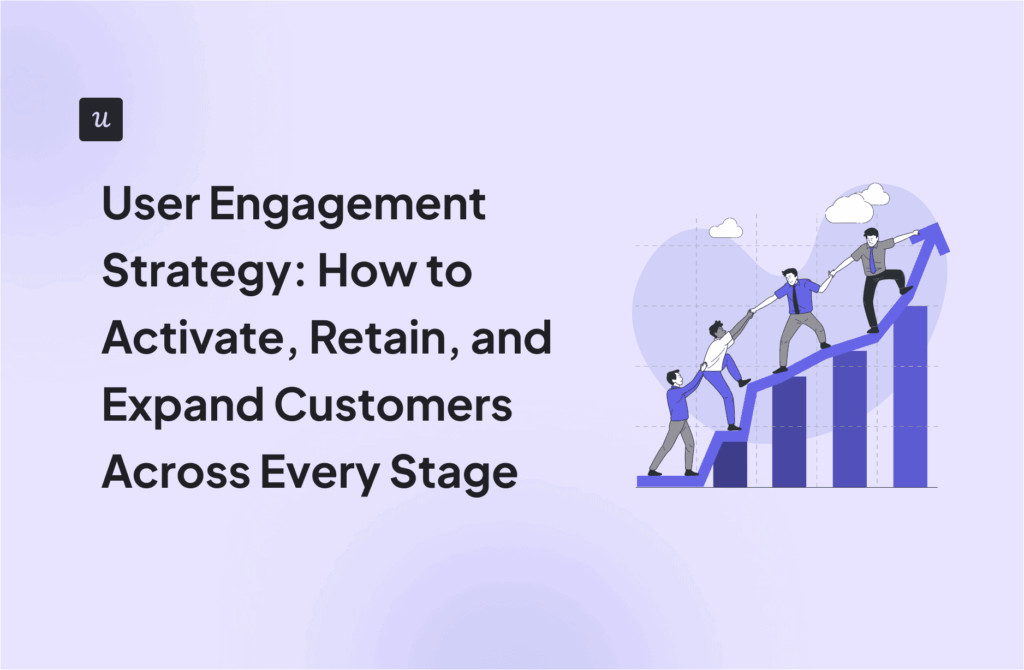
Value realization can make the difference between a customer who unsubscribes and a customer who becomes a brand advocate.
If you want to build a loyal customer base and nurture product growth, your focus should be spent on making users realize the value of your product as soon as possible. However, that might be trickier than you think.
So, let’s talk about value realization strategies and what you can do to improve yours.
Try Userpilot Now
See Why 1,000+ Teams Choose Userpilot

What is value realization?
Value realization is when a customer experiences and recognizes the value of your product or service. This can be achieved by aligning your output with the customer’s unique strategic or personal objectives.
Central to this process is the concept of value creation, where businesses proactively develop solutions to not only fulfill customer wants but also enhance their overall experience.
Value expectation vs. value realization
Although “value realization” and “value expectation” are closely related, they’re different.
Value expectation is when a customer has an “Aha! moment” and thinks your product can bring the results they need and then continues their journey with that expectation in mind.
Value realization is a later stage, and it happens when the customer experiences the value they were expecting face-to-face. It’s the moment a customer has finally reached the activation stage.
Value realization framework vs. value realization process
The terms value realization framework and value realization process both describe the stages or steps leading to the value realization moment.
They refer to the overall approach a business takes to capture and continuously optimize value from its products or services.
Since the two terms talk about the same thing, you’ll often see them used interchangeably as well.
What are the stages of the value realization process?
If you want to improve time-to-value and make sure that more users realize the value of your product, then you need to pay attention to the five stages of the SaaS value realization framework. These include:
- Definition
- Delivery
- Realization
- Validation
- Optimization

So let’s go over each stage while sharing some practices you can implement to perfect each stage.
1. Value definition
For value realization to happen, there must be an alignment between outcomes and expectations.
For this reason, the definition of value you communicate with customers is indispensable during this process. This way, your sales, marketing, and customer success teams can set up the right expectations that will lead to value realization as customers start using your product.
Here’s what you can do to create a clear definition of value:
Know your target audience and define what value means to them
Before communicating value to prospects, you must first determine what’s valuable for your user personas.
For this, you can create a persona that goes deep into what your customers find valuable, including benefits like getting their job done quickly, achieving business objectives, alleviating pain points, etc.
Creating such detailed personas requires direct customer research though. This includes methods such as interviews, surveys, chats with the customer success team, sales process recordings, etc.
For example, you can quickly identify what’s valuable for a product manager by looking at the example below. It clearly outlines their pain points, JTBDs, and goals that your product can be used to satisfy.

2. Value delivery
Value delivery is about implementing the solution so both the customer and your team can get ready for success. It can involve installations, integrating software, high-touch guidance strategies, and a lot of support throughout the process.
The goal here is to get through this process with as little investment of resources as possible. Here are some tactics you can apply to accomplish it:
Onboard users and provide in-app guidance
User onboarding is essential for customer success and covers the whole value delivery process.
Making the onboarding process as smooth and pleasant as possible is a big task. But you can start with implementing in-app guidance when your users first sign up.
That’s what Impala did, using Userpilot to create code-free personalized onboarding flows and interactive walkthroughs for each user segment. So users would only be introduced to elements, features, and workflows relevant to them, reducing their time to value realization.
Here’s one of Impala’s personalized flows below, designed specifically to target individuals or organizations looking for funding:
Offer ongoing customer support and education with a resource center
Customer education is part of value delivery. But what if a user faces an obstacle and needs answers fast?
Users don’t enjoy waiting in line to get support, and we’re sure your customer service agents are not looking forward to repeatedly responding to the same questions.
As a win-win solution, create and organize self-help resources in-app. Include diverse content formats such as articles, video tutorials, and webinars that cater to everyone’s learning style.
When users know they can find answers in a few clicks, delivery will happen quicker and with less friction.
RecruitNow is a great example to mention here. When face-to-face customer training became unsustainable for their customer success team, they used Userpilot to build a resource center with self-serve options and automatic content localization. This shift helped them dramatically reduce training hours, from hundreds to just 4 hours a month.

3. Value realization
After everything has been implemented and your customers start executing their tasks using your product, it’s up to your product and customer to make value realization happen.
Whether it happens or not depends on the expectations you set at the beginning and whether your product works as intended. It also depends on how well you educate your customers so they can achieve real-life results with it. So what can you do to improve at this stage?
Here’s one tactic:
Celebrate customer wins
With UX gamification and emotional design, you can add badges, points, and levels for a more fun product experience.
Celebrating milestones not only reduces the friction to adopt features but also encourages users to feel good whenever they accomplish a task. This makes them more likely to recognize your product’s value.
For example, here’s how Calendly celebrates when you schedule your meeting:

4. Value validation
Although the value realization stage is important, value validation is the stage that brings ROI.
So after the customer has recognized the value of your product, don’t sleep on it! You must ensure they’ll keep receiving the same level of value throughout the customer journey and achieve their goal.
Here’s what you can do about it:
Introduce users to more advanced features
As said earlier, your job doesn’t stop at value realization. At the validation stage, you must engage users with secondary onboarding so they can finally adopt your product.
For this, provide value to the user repeatedly by introducing secondary features relevant to their use case.
Think of triggered tooltips, secondary checklists, or webinars to encourage users to try new features, just like this one:

Drive account expansion through upsells and cross-sells
To experience the full value of your product, users have to upgrade their plan and buy upsells at this stage.
But it doesn’t mean you should try to upsell something at every customer touchpoint. Instead, prompt users to upgrade their plan only when you’re sure they will benefit from it.
Are your users constantly reaching the limits of their plans? Or doing a task the hard way when they could technically automate it with a premium feature?
Then ask them to upgrade with a personalized message.
For example, see how Loom teases you to upgrade when you reach the 5-minute recording limit on their freemium plan (which indicates that you’d benefit from unlimited recording).

5. Value optimization
Industries and technologies change rapidly, and so do your customer expectations.
At the value optimization stage, you must safeguard your acquired customers by ensuring that your value is timeless and evergreen.
Here are two key practices that will help you optimize the value of your product constantly:
Check-in with customers and collect feedback
At the optimization stage, you need to understand how your customers feel about your brand and do your best to keep providing value.
You can automate customer feedback collection and trigger in-app surveys at different touchpoints. This helps measure how customers feel throughout their journey and identifies opportunities for improvement.
There are different types of customer satisfaction surveys you can use, such as CES (customer effort score), CSAT, NPS, and so on.
But it doesn’t stop there. To make sure your customers feel heard and realize the value of your brand, you need to close the feedback loop by acting on it. For example, implementing a highly-requested feature, solving a common bug, integrating your product with other apps, etc.

Gather qualifying evidence of value from your customers
To get evidence of your product’s value to your customers, you can ask for reviews on 3rd-party review platforms, referrals, and testimonials. This helps you obtain social proof and understand what makes your product valuable.
For example, you can ask users to leave a testimonial after they’ve reached a specific milestone. Or you can also do some social listening, find people actively sharing your product with their network, reach out to them to thank them and ask them to write a G2 review.
Speaking of which, you can even check review sites like G2 or Capterra and see how many users are actively recommending your product without you knowing. Maybe you’ll find some gold nuggets there you haven’t discovered yet.

Why is value realization important?
If you think value realization isn’t worth paying attention to, you’re missing out.
Ensuring that your customers find real value in your product is essential for multiple reasons:
Convert users into customers
If your SaaS offers a demo or a free trial, value realization can be the decisive moment when a user decides to convert into a paying customer.
The reason is simple. Most people will only pay for a product when they recognize the benefits of your product and experience the promised value directly.
Unlock upsell and cross-sell opportunities
After realizing the value of your product, customers are now convinced that it’s worth investing in your brand. This makes them more likely to accept upsell prompts, upgrade, and buy additional services.
Drive long-term retention and loyalty
If you ensure that your customers are experiencing value throughout their journey (and not just during the free trial), you’ll retain them and maximize customer lifetime value (LTV).
Not only that but if you exceed their expectations, they’ll eventually become brand advocates and market your product through word-of-mouth. Slowly cultivating customer loyalty.
Important value realization metrics to track
Now that you know the importance of the value realization framework in driving customer success, you might wonder how to track it.
And while you can’t read your user’s minds, some key performance indicators can give you an idea of what’s going on:
Time to Value
As the name indicates, time to value (TTV) refers to the time it takes for a user to realize the expected value of your product.
If you want free trial users to convert into paying customers and reduce any churn risk, you want this metric to be as short as possible.
How to decrease time to value?
To reduce time to value, you can show a personalized empty state.
An empty state is what users see when they sign up, and all they see is a blank dashboard. This creates barriers to value realization and hurts time to value.
However, when you replace the white space with educational resources, you can help users get a head start when they sign up and accelerate their journey.
That’s what Attention Insight did, integrating interactive walkthroughs, dedicated flows to draw attention to specific UI elements and features, and onboarding checklists like the one below:

Time to live
Time to live is the time it takes for a customer to implement your solution, i.e. “go live” with it. In short, it measures how long the value delivery lasts (as you’ll learn later), so you can shorten it.
Return on investment
Return on investment (ROI) is one of the most famous key performance indicators. It measures how much income you get from your investment.
Since most businesses use ROI as their primary metric for success, you can use it to measure your customer’s success with your product and make them realize its value easier.
Net Promoter Score
Net Promoter Score (NPS) shows how willing customers are to recommend your product to others by comparing the number of promoters and detractors.
High NPS scores indicate that customers are realizing your value since they’re willing to advise others to use your product, acting as brand advocates.
Value realization FAQs
Let’s go over some additional insights to answer any pending questions you may have about the value realization framework.
What is the meaning of value realization?
Value realization is the point where customers experience the value they were previously promised with your product or service. As such, value realization strategies focus on ensuring customers derive tangible benefits from your product as quickly as possible, enhancing their overall experience.
What is an example of value realization?
An example of value realization is a SaaS company tracking how its software improves customer workflows. This helps highlight significant time savings and enhanced efficiency, ultimately driving customer success and delivering greater value.
What is the value realization principle?
The value realization principle in SaaS emphasizes recognizing value as successfully delivered only once the product is effectively implemented and benefits are clear. In other words, the principle centers on ensuring customers achieve meaningful outcomes as expected, to count as value realization.
What is business value realization?
Business value realization involves identifying, achieving, and showcasing the advantages derived from implementing a new or enhanced product, solution, or service. It focuses on translating investments into measurable outcomes that contribute to organizational goals and drive overall success.
Conclusion
Although it seems very subjective, you can foster value realization when following the right practices.
Some of these practices can be easily implemented using a customer success tool like Userpilot. So why not book a demo to see how you can enhance your success process without coding?











